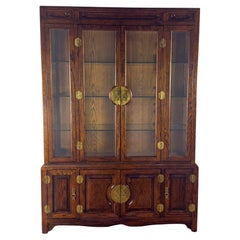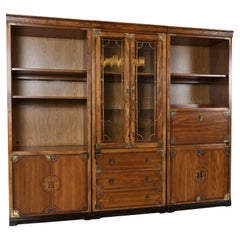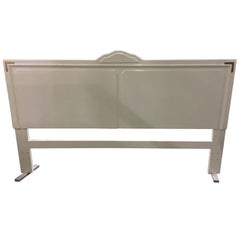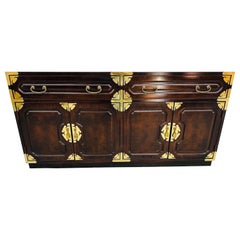Bernhardt Chinoiserie
Late 20th Century American Campaign Cabinets
Brass
Vintage 1970s American Chinoiserie Bookcases
Brass
Recent Sales
1990s American Chinoiserie Bedroom Sets
Hardwood
Late 20th Century American Chinoiserie Sideboards
Brass
20th Century American Chinoiserie Wall Mirrors
Wood
Vintage 1970s Chinoiserie Dry Bars
Brass
Late 20th Century American Chinoiserie Dining Room Chairs
Upholstery, Cane, Mahogany
Late 20th Century American Chinoiserie Dining Room Chairs
Upholstery, Mahogany
Vintage 1970s American Chinoiserie Cabinets
Brass
Vintage 1980s American Chinoiserie Dining Room Chairs
Upholstery, Cane, Mahogany
Vintage 1970s American Mid-Century Modern Sideboards
Brass
Vintage 1970s American Chinoiserie Console Tables
Brass
20th Century American Chinoiserie Credenzas
Brass
1990s American Chinoiserie Dressers
Hardwood
Vintage 1970s American Chinoiserie Beds and Bed Frames
Wood
People Also Browsed
21st Century and Contemporary American Chandeliers and Pendants
Brass
2010s American Modern Chandeliers and Pendants
Brass
21st Century and Contemporary American Bohemian Chandeliers and Pendants
Brass
Antique 19th Century Syrian Islamic Game Tables
Stone
Antique Late 19th Century American Bookcases
Glass, Mahogany
21st Century and Contemporary Portuguese Art Deco Chandeliers and Pendants
Metal
Mid-20th Century Danish Mid-Century Modern Lounge Chairs
Velvet, Oak
Mid-20th Century Mexican Mid-Century Modern Dressers
Seagrass, Mahogany
2010s Italian Other Cabinets
Wood
Vintage 1940s French Wall Lights and Sconces
Ceramic, Linen, Oak
Vintage 1970s American Baroque Wardrobes and Armoires
Wood
21st Century and Contemporary French Modern Coffee and Cocktail Tables
Iron
21st Century and Contemporary British Wallpaper
Paper
Vintage 1970s Mid-Century Modern Dressers
Brass
Antique 18th Century Italian Regency Beds and Bed Frames
Wood, Paint
Vintage 1970s American Campaign Cabinets
Brass
Bernhardt for sale on 1stDibs
While many great American furniture brands have come and gone, Bernhardt continues to thrive in its space. Spanning more than 130 years and four generations of family leadership, the company maintains an enduring presence in the modern era. It is a global manufacturer of furniture and home accessories and has garnered widespread acclaim for its signature high-quality craftsmanship. Today Bernhardt lounge chairs, coffee tables and dressers are reliable mainstays in living rooms, bedrooms, offices, school campuses and hospitality properties all over the world.
The company was founded in 1889 by John Bernhardt, a veteran of the sawmill trade who intended to produce durable furniture made of wood from the white oak trees that grew in his native North Carolina. Bernhardt quickly earned a reputation for his exceptionally strong, sturdy, striking pieces and eventually gained competitors in the likes of Broyhill and Kent-Coffey, two Lenoir companies that were established in the early 1900s. Bernhardt created fruitful relationships for distributing his furniture all over the country, and as the business gained steam, the company was able to survive the trials and tribulations of World War I and the Great Depression.
While World War II yielded labor and material shortages, demand for furniture took shape in the postwar years as new homeowners looked to furnish their spaces. Expansion followed for Bernhardt, and in 1958, the company added upholstered furniture to its growing catalog. As often as you can find boxy club chairs in Bernhardt’s inventory that are inspired by iconic designs by Le Corbusier or Milo Baughman, the brand has introduced reproductions of furnishings in period styles such as Chippendale, Hollywood Regency and chinoiserie.
Bernhardt continued to expand over time and, in 1981, added the Bernhardt Design division, which focuses on furnishing offices and public spaces. It entered the new millennium by announcing a licensed furniture partnership with Martha Stewart in 2001. Bernhardt and Stewart have since collaborated on several additional collections. In 2008 and 2009, the company launched two more divisions: Bernhardt Interiors for customizable and high-design furniture and Bernhardt Hospitality to cater to the needs of the hospitality market.
Bernhardt has garnered many prestigious awards over its long history, including multiple Pinnacle Design Achievement Awards from the American Society of Furniture Designers. The company is also a leader in sustainable manufacturing and works with the Sustainable Forestry Initiative and the Forest Stewardship Council.
In 2019, Bernhardt introduced the Bernhardt Exteriors division for high-quality and innovative outdoor furniture. Today, the company operates eight manufacturing facilities and continues to be a leader and trendsetter in the growing worldwide oak furniture market.
On 1stDibs, find Bernhardt seating, tables, case pieces and more.
A Close Look at Chinoiserie Furniture
Emerging in the 17th century, chinoiserie appropriated the aesthetics and imagery of popular East Asian design for European-made versions. Reflecting the exoticization of China, Japan and other countries in this era, the word directly translates from French to “Chinese-esque,” which reveals its shortcomings as a style of furniture and decor that often stereotypically and reductively mimics Asian culture rather than showcasing and paying tribute to its artistic traditions.
The enthusiastically decorative chinoiserie style was propelled by influential tastemakers including French King Louis XIV, whose Trianon de Porcelaine in 1670 was inspired by Chinese architecture. Expanded trade between the East and West led to a demand for porcelain, lacquer objects, silk and other goods, which further informed the fanciful furniture being crafted in Europe.
Artisans working in the chinoiserie style used materials and elements like pagoda shapes, bamboo, lacquer surfaces, bird and flower motifs and other interpretations of Asian design on pieces that were frequently set against vibrant wallcoverings. This whimsical approach yielded chinoiserie furniture that boasted dramatic flourishes drawing on the natural world and reflected the dominance of Rococo during the 18th century.
As chinoiserie was shaped by approximations of Asian design by European creators, it had regional variations, such as Chinese Chippendale in England where cabinets, chairs and tea tables had wooden fretwork designs and “japanned” surfaces intended to resemble lacquer work that was created in East Asia. In North America, furniture makers in Boston and New York integrated chinoiserie-painted scenes into Queen Anne furniture.
Antique chinoiserie furniture has continued to be fashionable, from its popularity with decorators of the Hollywood Regency era — James Mont, Tommi Parzinger, William Haines and Samuel Marx favored the style — to contemporary interior designers, although it brings with it a complex history.
Find a collection of chinoiserie bedroom furniture, cabinets, decorative objects and more on 1stDibs.



